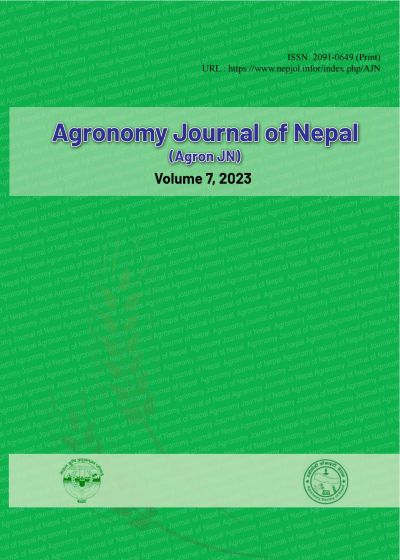Growth and Yield of Cowpea (Vigna unguiculata L.) Under Different Levels of Phosphorous and Seed Inoculation with Rhizobium
DOI:
https://doi.org/10.3126/ajn.v7i1.62056Keywords:
Cowpea, growth, yield traits, Rhizobium leguminosarumAbstract
Cowpea (Vigna unguiculata L.) is a major source of protein and an important component of Nepal's cropping systems. However, yields are very low due to a lack of improved cultivars, poor management practices, and limited input use. The objective of this study was to evaluate the effects of rhizobia inoculant and P on cowpea growth and yield. A field study was carried out in Bharatpur-11, Chitwan, Nepal, during the spring season of 2022, using a randomized complete block design with three replications and eight treatments. The treatments included four different phosphorus doses (20, 40, 60, and 80 kg ha-1) and seed inoculation (un-inoculated and inoculated). The rhizobium-inoculated plants produced significantly higher grain yield (1.27 t ha-1) and various yield-attributing parameters than un-inoculated plants. Phosphorus fertilizer at 40 kg ha-1 produced a higher grain yield (1.41 t ha-1) than other phosphorus doses. The combination of rhizobium inoculation and application of phosphorus at the rate 40 kg ha-1 yielded the highest grain yield (1.53 t ha-1). The results show that phosphorus dose of 40 kg ha-1 combined with Rhizobium inoculation with seed has the potential to improve cowpea grain yield.
Downloads
Downloads
Published
How to Cite
Issue
Section
License
Copyright (c) 2023 Agronomy Society of Nepal (ASoN)

This work is licensed under a Creative Commons Attribution-NonCommercial 4.0 International License.
ASON permits for free use, distribution and reproduction in any medium if the original work is properly cited and not used for commercial purposes.




